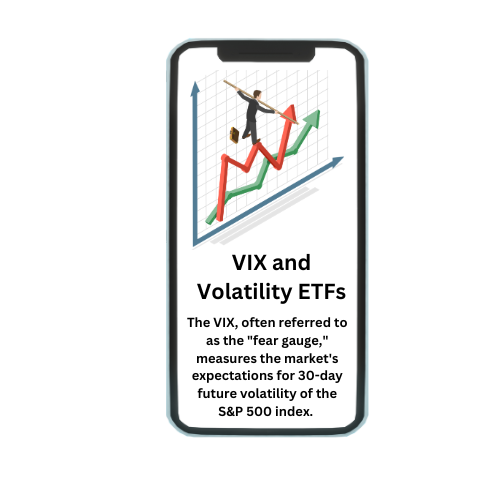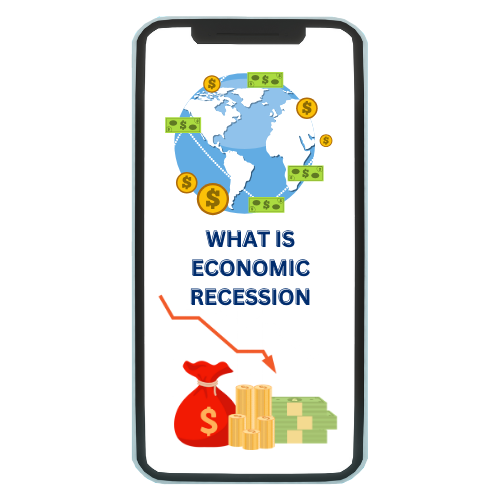The VIX (Volatility Index) and volatility ETFs are closely related but serve different functions in the financial markets. Here’s a comprehensive overview of each and how they interact:
VIX
The VIX, often referred to as the “fear gauge,” measures the market’s expectations for 30-day future volatility of the S&P 500 index. It’s a real-time index that reflects the level of expected market volatility based on the prices of S&P 500 index options.
The VIX Index, formally known as the CBOE Volatility Index, is a widely followed benchmark for market sentiment and expected volatility. Here are some key aspects of the VIX:
- Calculation and Meaning:
- Source: The VIX is calculated using the prices of S&P 500 index options. It aggregates the weighted average of implied volatilities for a range of strike prices, representing the market’s expectations of volatility over the next 30 days.
- Formula: It’s a bit complex, but essentially, the VIX is derived from the implied volatilities of near-term S&P 500 options, both puts and calls. It uses a formula that takes into account the weighted average of these implied volatilities, adjusted for time to expiration.
- Interpreting VIX Levels:
- High VIX: A high VIX value indicates higher expected volatility, which usually happens during periods of market stress, uncertainty, or major geopolitical events. Traders often interpret a high VIX as a sign of fear or heightened risk.
- Low VIX: A low VIX indicates lower expected volatility, which often correlates with a stable or bullish market environment. It suggests that investors expect relatively calm market conditions.
- Historical Context:
- Historical Highs: The VIX has reached very high levels during significant market crises. For example, it spiked during the 2008 financial crisis and the COVID-19 market turmoil in early 2020.
- Historical Lows: The VIX has also hit historically low levels during prolonged periods of market stability or bullish trends.
- Trading and Investment:
- VIX Futures and Options: Investors can trade VIX futures and options to hedge against market volatility or speculate on future volatility. These instruments allow traders to take positions on the direction of the VIX.
- VIX-Related ETFs: There are exchange-traded funds (ETFs) and exchange-traded notes (ETNs) that track the VIX or VIX futures, providing investors with a way to gain exposure to volatility without directly trading VIX futures.
- Limitations and Considerations:
- Not a Perfect Predictor: While the VIX is a useful gauge of market sentiment, it’s not a perfect predictor of future market movements. High VIX values can persist even when markets recover, and low VIX values can remain low during market downturns.
- Complexity: Trading VIX futures and options can be complex and may involve significant risk, especially since the VIX can be highly volatile itself.
- Impact on Market Strategies:
- Hedging: Investors use the VIX to hedge against potential market declines. For instance, a rise in the VIX might prompt investors to use it as a signal to adjust their portfolios.
- Market Timing: Some traders use the VIX to time their market entries and exits, assuming that extreme VIX levels might indicate a market turning point.
Volatility ETFs
Volatility ETFs (Exchange-Traded Funds) are investment funds that aim to provide exposure to volatility, typically through derivatives like VIX futures and options. They can be used for hedging, speculative purposes, or to diversify a portfolio. Here’s a closer look at these ETFs:
1. Types of Volatility ETFs:
1.1. VIX-Based ETFs:
VIX ETFs: These ETFs seek to track the performance of the VIX index or related futures contracts. They are not directly linked to the VIX index but rather to futures contracts based on VIX expectations.
Examples:
- ProShares VIX Short-Term Futures ETF (VIXY): Seeks to track an index of short-term VIX futures.
- iPath Series B S&P 500 VIX Short-Term Futures ETN (VXX): Tracks the performance of VIX short-term futures contracts.
1.2. Volatility-Linked ETFs:
- Inverse Volatility ETFs: These ETFs aim to provide the inverse of the performance of volatility measures. They can be used to profit from a decline in volatility.
Examples:
- ProShares Short VIX Short-Term Futures ETF (SVXY): Seeks to provide inverse exposure to short-term VIX futures.
- Leveraged Volatility ETFs: These ETFs aim to provide multiples of the performance of volatility measures, typically 1.5x or 2x. They can amplify gains but also losses.
Examples:
- ProShares Ultra VIX Short-Term Futures ETF (UVXY): Seeks to deliver twice the daily performance of VIX short-term futures.
- Velocity Shares Daily 2x VIX Short-Term ETN (TVIX): Targets twice the daily performance of VIX short-term futures.
2. How They Work:
- Futures Contracts: Most volatility ETFs gain exposure through futures contracts on the VIX index. The performance of these contracts can deviate from the VIX index itself due to factors like contango (where futures prices are higher than the spot price) and backwardation (where futures prices are lower than the spot price).
- Contango and Backwardation: Volatility ETFs that use futures contracts are affected by the shape of the futures curve. In contango, futures contracts are more expensive than the current spot price, which can erode ETF value over time. In backwardation, futures are cheaper, which might benefit the ETF.
3. Uses and Strategies:
- Hedging: Investors use volatility ETFs to hedge against market declines. As market volatility increases, the value of these ETFs often rises, providing a counterbalance to equity positions.
- Speculation: Traders use volatility ETFs to speculate on changes in market volatility. For instance, buying a VIX ETF may be used to profit from expected increases in market volatility.
- Diversification: They can also serve as a tool for diversifying a portfolio, especially in periods of market stress when traditional asset classes may be underperforming.
4. Risks and Considerations:
- Complexity: Volatility ETFs are complex financial instruments. Their performance can be influenced by factors other than just the underlying VIX index, such as the roll yield of futures contracts.
- High Volatility: These ETFs themselves can be highly volatile, and their prices can experience significant swings, especially in turbulent market conditions.
- Long-Term Holding: Due to the nature of futures contracts, these ETFs may not be suitable for long-term holding. They are generally more appropriate for short-term trading or tactical adjustments.
- Expense Ratios: Volatility ETFs often have higher expense ratios compared to traditional ETFs due to the costs associated with managing futures contracts and other derivatives.
5. Examples and Alternatives:
- iPath Series B S&P 500 VIX Mid-Term Futures ETN (VXZ): Tracks mid-term VIX futures.
- Cboe Vest S&P 500 Buffer ETFs: These ETFs aim to provide upside participation in the S&P 500 with limited downside protection, but are not directly linked to the VIX.
How Volatility ETFs AND VIX Are Related?
Volatility ETFs (Exchange-Traded Funds) and the VIX (Volatility Index) are closely related because volatility ETFs are typically designed to track or replicate the movements of the VIX or other volatility-related indices.
Relationship and Performance:
- Volatility ETFs are designed to rise in value when market volatility increases (and the VIX rises) and decline when volatility decreases (and the VIX falls).
- However, due to the use of futures contracts, volatility ETFs can suffer from the effects of “contango” (when the futures prices are higher than spot prices), leading to a decline in value over time even if the VIX stays flat.
- Conversely, during “backwardation” (when futures prices are lower than spot prices), these ETFs can see better performance.
Key Points to Note:
- Volatility ETFs are not a perfect mirror of the VIX. Due to the complexities of rolling futures contracts and other technical factors, these ETFs may diverge from the VIX’s actual performance.
- Volatility ETFs can be highly volatile and are typically used for short-term trading rather than long-term holding, as they can lose value over time due to the futures contracts’ structure.





